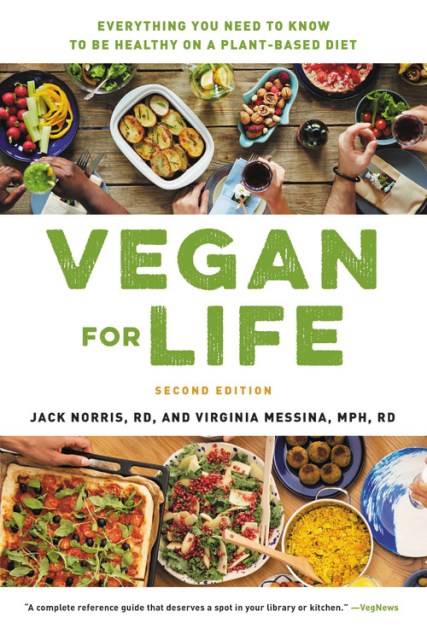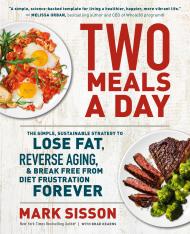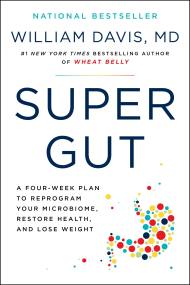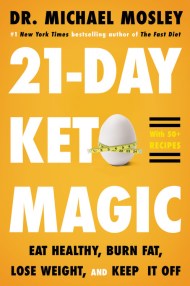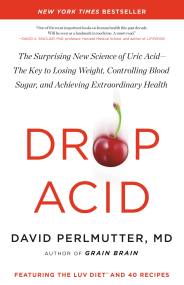Promotion
Shop now and save 20% on your back-to-school purchases & get free shipping on orders $45+ Use code: SCHOOL24
Vegan for Life
Everything You Need to Know to Be Healthy on a Plant-based Diet
Contributors
By Jack Norris
Formats and Prices
Price
$19.99Price
$25.99 CADFormat
Format:
- Trade Paperback (Revised) $19.99 $25.99 CAD
- ebook (Revised) $11.99 $15.99 CAD
- Audiobook Download
This item is a preorder. Your payment method will be charged immediately, and the product is expected to ship on or around May 12, 2020. This date is subject to change due to shipping delays beyond our control.
Also available from:
Whether you’re considering going vegan or just want to learn more about plant-based nutrition, Vegan for Life is your comprehensive, go-to guide for optimal healthy eating. Registered dietitians and long-time vegans Jack Norris and Virginia Messina debunk some of the most persistent myths about vegan nutrition and provide essential information about getting enough calcium and protein, finding the best supplements, and understanding the “real deal” about soy.
Covering everything from a six-step transition plan to meeting protein requirements and even calorie and nutrient needs during pregnancy and breastfeeding, Vegan for Life is the guide for aspiring and veteran vegans alike, complete with an easy-to-use food chart, tasty substitutions, sample menus, and expansive resources.
-
"This book explains everything one needs to know about going vegan. Comprehensive and succinct, it is a must-have for nutritionists and anyone contemplating a vegan diet."Library Journal
-
"Armed with this compendium and a vegan cookbook, novices will make an easy, healthy transition to meat, egg and dairy-free meals, while practicing vegans can use it as a guide to the best food choices."Publishers Weekly
-
"Packed with science yet never boring, Norris and Messina -- both long-time vegans themselves -- put their wealth of knowledge at your fingertips while putting to rest any nutritional issues that concern those aspiring to a plant based-diet...No vegan myth goes unbusted...Vegan for Life is a complete reference guide that deserves a spot in your library or kitchen."VegNews
-
"Whether you've been enjoying a plant-based diet for years or are just starting on the adventure, Norris and Messina will prove to be outstanding mentors. Even if you don't plan to eliminate meat and animal products completely, there's valuable information here about incorporating foods that help you fight disease, build the immune system, and feel better in general. Vegan for Life is one of those books that you'll pull off the shelf for inspiration and consultation time after time."Curled Up With a Good Book
-
"Any general lending library catering to vegetarians needs this introductory guide."Midwest Book Review
-
"Vegan for Life is full of helpful charts that show specific nutrients found in numerous fruits, nuts and vegetables. I love how easy this makes it to be sure you are getting the proper nutrition in your vegan lifestyle."Texas Kitchen (blog)
-
"A book that is both so encouraging and so incredibly necessary right now."Run Vegan (blog)
-
"Vegan for Life makes going vegan doable. I would definitely recommend this book to vegans, the vegan-curious, and those living with vegan family members."Veggie Voyeur
-
"Beyond setting straight some outdated nutrition information, the book will put to rest most nutrition worries you might have."Lone Star Plate
-
"Ginny Messina is one of the world's most highly respected pioneers of vegan nutrition. Her work is clear, insightful and meticulous. No matter where you are at on your vegan journey, this book will serve as an invaluable companion."Brenda Davis, RD, on Vegan for Her
-
"Ginny Messina is one of the world's most highly respected pioneers of vegan nutrition. Her work is clear, insightful and meticulous. No matter where you are at on your vegan journey, this book will serve as an invaluable companion."Brenda Davis, RD, on Vegan for Her
-
"Vegan for Her is an excellent and articulate resource for every woman who wants to eat with compassion while protecting and enhancing her health."Carol J. Adams, author of The Sexual Politics of Meat and Living Among Meat Eaters, on Vegan for Her
-
"Vegan for Her provides sensible guidance for women of all ages. Whether your focus is sports nutrition, eating to prevent cancer or heart disease, or simply understanding how a plant-based diet can meet your unique needs, this book is for you. It's like a conversation with a savvy, caring friend."Reed Mangels, PhD, RD, author of The Everything Vegan Pregnancy Book and coauthor of Simply Vegan, on Vegan for Her
-
"Thinking of going vegetarian or vegan? If so, and you're a woman, don't miss Vegan for Her."Hudson Valley News
- On Sale
- May 12, 2020
- Page Count
- 352 pages
- Publisher
- Hachette Go
- ISBN-13
- 9780738285863
Newsletter Signup
By clicking ‘Sign Up,’ I acknowledge that I have read and agree to Hachette Book Group’s Privacy Policy and Terms of Use
